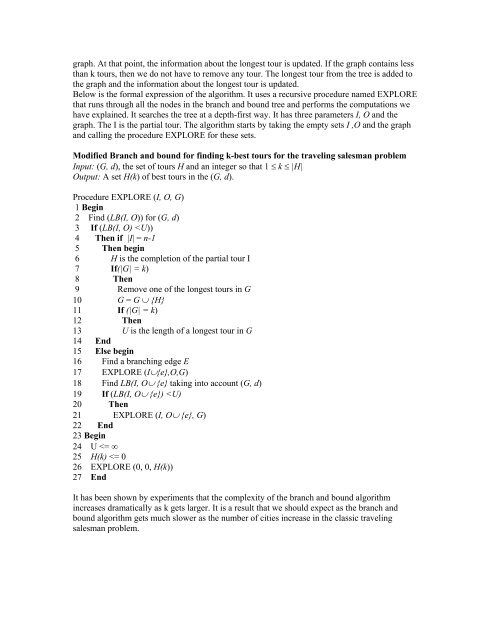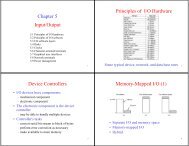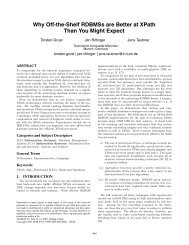Chapter 10 The Traveling Salesman Problem
Chapter 10 The Traveling Salesman Problem
Chapter 10 The Traveling Salesman Problem
Create successful ePaper yourself
Turn your PDF publications into a flip-book with our unique Google optimized e-Paper software.
graph. At that point, the information about the longest tour is updated. If the graph contains less<br />
than k tours, then we do not have to remove any tour. <strong>The</strong> longest tour from the tree is added to<br />
the graph and the information about the longest tour is updated.<br />
Below is the formal expression of the algorithm. It uses a recursive procedure named EXPLORE<br />
that runs through all the nodes in the branch and bound tree and performs the computations we<br />
have explained. It searches the tree at a depth-first way. It has three parameters I, O and the<br />
graph. <strong>The</strong> I is the partial tour. <strong>The</strong> algorithm starts by taking the empty sets I ,O and the graph<br />
and calling the procedure EXPLORE for these sets.<br />
Modified Branch and bound for finding k-best tours for the traveling salesman problem<br />
Input: (G, d), the set of tours H and an integer so that 1 ≤ k ≤ |H|<br />
Output: A set H(k) of best tours in the (G, d).<br />
Procedure EXPLORE (I, O, G)<br />
1 Begin<br />
2 Find (LB(I, O)) for (G, d)<br />
3 If (LB(I, O)






